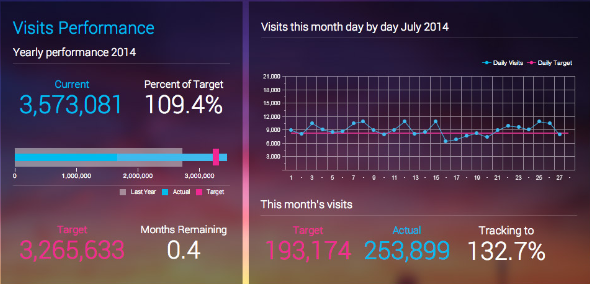A well-executed inbound marketing campaign has the ability to bring in new customers who were originally hard to reach and unaware of your company and products. Inbound marketing is also a cost effective way of reaching a large number of people without having to spend a fortune on advertising or sales forces.
Below are ten check points to guide you along the process of setting up an inbound marketing campaign to boost your customer base and most hopefully drive revenue.
1. Identify your campaign audience
The first place to start is to get a clear idea of who your campaigns audience is. Having a clear view of your audience will allow you to tailor your message directly to them and increase your chances of them converting into a customer. Your audience will have an impact on what your offer is, your branding, copywriting and design.

It is important to note that your audience isn’t always your end user. If you are promoting children’s clothes for example, then your audience is parents and not the child, if you are promoting an elderly home, your audience might be the children of the person requiring a home.
Additionally, this is crucial to take into consideration for websites that offer products or services that might be purchased as gifts. Recent research on one of our ecommerce clients highlighted that much of their traffic came from females for a male focused site. Not only were these figures surprising but the conversion rate for females in contrast to males was much higher as well.
2. Create your offer and landing pages
Creating your offer is all about providing something of value to your target audience. The value has to be greater than the cost to your potential customer if you want a fair chance of converting them. If your aim is to generate leads then you will need to come up with an incentive for someone to opt-in, this might be a free whitepaper, e-book or template. If you are selling a product then you need to consider benefits, features and pricing.
A large factor of whether your offer will be accepted by the customer is due to your landing page. It should instantly capture your viewers’ attention and use compelling copy and images to engage and sell the viewer on your offer. The most effective way of creating high converting landing pages is to A/B test them against each other and consistently try to come up with a higher converting page.
3. Set your goals and benchmarks
Every successful campaign needs to have goals or benchmarks that you aim to achieve. Not knowing what you want to achieve makes it impossible to know if the campaign was a success or not and therefore if it was a worthwhile use of time and money.
A popular format for goal setting is to use the SMART formula in which your goals should be specific, measurable, attainable, realistic and timely. SMART goals may include getting 1000 email opt-ins over one month or 20 customers purchasing your offer each day.
4. Build your automation and nurturing flows
Once someone has taken you up on your offer, then it is important to maintain contact with them and nurture them into a long term and valued customer. Using methods such as email marketing can make the entire process automated allows you to send regular emails to upsell them or make a purchase.
Your follow up marketing shouldn’t necessarily always be about selling. Rather, it can be a channel to offer them more value and information and therefore keeping your company in the forefront of your customers mind.
5. Marketing the offer
You might have the greatest offer in the world and a stunning landing page however if nobody knows about it then it’s of no use.
There are various effective ways to drive traffic to your landing page but a couple of quick win options that come to mind would be;
Write a blog post – Make your readers aware of the latest offer with strong call to actions within the post that really sell the latest promotion.
Review existing content – Reviewing popular and older onsite content for opportunities is a great way to make your audience mindful of your latest promotions. There could be blog posts, tools, or other forms of content that attract a lot of long tail traffic and directly correlate to your latest promotion in regards to subject matter. This would be a great time to add a call to actions to these pages to further support in your marketing efforts whilst simultaneously updating existing content which search engines love.
Other options for marketing the latest offers include small homepage banners and pop-up call to actions such as modals.
6. Share it on social media
Your social media audience have already demonstrated interest in your company and many of them are probably already customers which makes it an ideal place to promote your offer and blog post. If someone already has a relationship with you through social media, then there is probably a higher chance that they will make a purchase from you.
It’s important to integrate strong call to actions, hashtags, shortened URL’s (using Bit.ly) and relevant target influencers within the social updates to further amplify the reach.
7. Optimise with relevant keywords
Making sure your campaign is search engine friendly will allow people to find your offer well after you have finished promoting it. Including long tail keywords to your blog posts and landing page will give your pages a better chance of appearing in search engines for relevant phrases.
8. Consider paid search and other channels
Sending viewers through organic search results and tapping into your social media followers has its limitations. Pages take time to rank and certain keywords are fiercely competitive while nobody has an endless supply of social media followers. Two ways to instantly get more targeted eyeballs on your content is through paid and native advertising.
While you have to pay every time someone clicks on your ad or content, those people will have a degree of interest in your offer as they click on your advertisement. The native advertisement campaign you are running could quite simply be promoting the blog post you have just written which would in turn link through to the landing page. The most popular networks currently in the UK are Taboola and Outbrain who offer their own unique forms of targeting.
Other channels may include advertising on social media sites or running display campaigns.
One great advantage of paying for customers is that you can determine what channels are cost effective and which ones aren’t. Stick with the channels that provide a positive return and cut costs on channels that aren’t effectively meeting their outlined performance metrics.
9. Track Your URLs
URL tracking will give you a good idea where the highest converting traffic is coming from. By setting up and tracking campaigns separately you can determine what the most effective ways of promoting your offer are.
It is imperative that you focus on performance, which means attention to conversions per campaign and not heavily focusing on traffic numbers as different traffic sources will have different conversion performance metrics.
10. Reporting
Through the use of analytics tools and compiling data, you can now determine if the campaign was a success or not. Hopefully your campaign was a real success and provided a good return on investment, then you might decide to scale up the campaign.
For unsuccessful campaigns you may want to continue tweaking all of the above until you start to see positive statistics and engagement or simply choose to discontinue the campaign and take those learnings to influence your decisions more directly on your next inbound marketing campaign.



